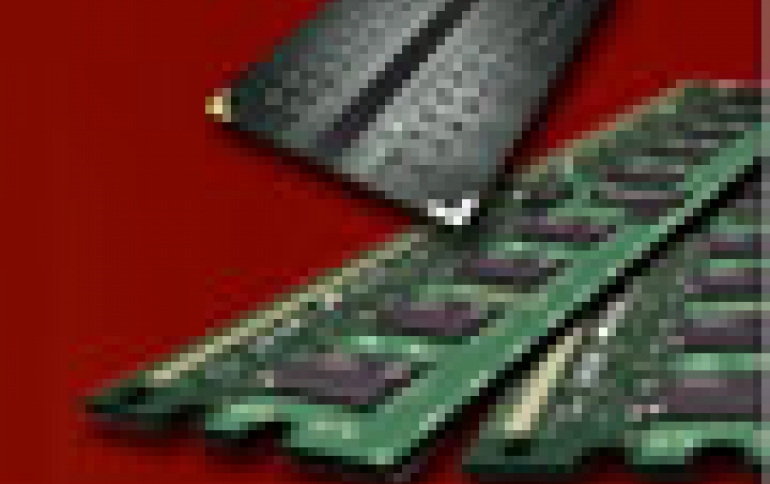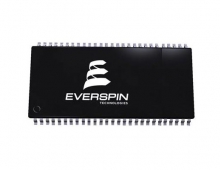
MRAM and PCM To Become Top Non-Volatile-Memory Solutions By 2018
Emerging, high-density non-Volatile-Memory (NVM) chips such as MRAM/STTMRAM and PCM will be increasingly used in various markets and will represent a $1.6B business by 2018, according to a report.
In the near future, NVM (MRAM, PCM, RRAM, FeRAM) will be increasingly used in various markets: industrial and transportation, enterprise storage, smart card, mobiles phones and mass storage.
Until recently, only FRAM, PCM and MRAM were industrially produced and were available in low-density chips to only a few players. As a result, the market was quite limited and considerably smaller than the volatile DRAM and non-volatile flash NAND dominant memory markets, which enjoyed combined revenues of $50B +in 2012.
French research firm Yole Developpement forecasts that the scalability and chip density of those memories will be greatly improved and will spark many new applications in the next five years.
The firm sees STTMRAM and PCM Cache memory to find their way to enterprise storage, to greatly improve the input/output performance of enterprise storage systems.
Mobile phones will adopt PCM as a substitute to flash NOR memory in MCP packages thanks to 1GB chips made available by Micron in 2012. Higher-density chips, expected in 2015, will allow access to smart phone applications that are quickly replacing entry-level phones. STTMRAM is expected to replace SRAM in SoC applications thanks to lower power consumption and better scalability.
Smart card MCU (microcontrollers) will likely adopt MRAM/STTMRAM and PCM as a substitute to embedded flash. Indeed, flash memory cell-size reduction is limited for the future. NVM could reduce the cell size by 50% and thus be more cost-competitive. Additional features like increased security, lower power consumption and higher endurance are also appealing NVM attributes.
Mass storage markets served by flash NAND could begin using 3D RRAM in 2017-2018, when 3D NAND will slow down its scalability as predicted by all of the main memory players. When this happens, a massive RRAM ramp-up is expected to commence in the next decade that will replace NAND, if sufficient 3D RRAM cost-competiveness and chip density are available.
Yole Developpement estimates that the global emerging non-volatile memory market will grow from $209M in 2012 to $2B in 2018 -- an impressive growth of + 46 %/year.
"By 2018, MRAM/STTMRAM and PCM will surely be the top two NVM on the market. Combined, they will represent a $1.6B business by 2018, and their sales will almost double each year, with doubledensity chips launched every two years," explains Yann de Charentenay, senior technology and market analyst at Yole D?veloppement.
The memory supply chain has been highly concentrated in the last 10 years, supporting a huge price/Gb decrease (-20% to 40%/year for NAND and DRAM). The top five memory players -- Samsung, Micron, SK Hynix, Toshiba and SanDisk -- hold 90 % of DRAM and NAND sales and are expected to have a key role in the competitive landscape of the emerging NVM.
Until recently, only FRAM, PCM and MRAM were industrially produced and were available in low-density chips to only a few players. As a result, the market was quite limited and considerably smaller than the volatile DRAM and non-volatile flash NAND dominant memory markets, which enjoyed combined revenues of $50B +in 2012.
French research firm Yole Developpement forecasts that the scalability and chip density of those memories will be greatly improved and will spark many new applications in the next five years.
The firm sees STTMRAM and PCM Cache memory to find their way to enterprise storage, to greatly improve the input/output performance of enterprise storage systems.
Mobile phones will adopt PCM as a substitute to flash NOR memory in MCP packages thanks to 1GB chips made available by Micron in 2012. Higher-density chips, expected in 2015, will allow access to smart phone applications that are quickly replacing entry-level phones. STTMRAM is expected to replace SRAM in SoC applications thanks to lower power consumption and better scalability.
Smart card MCU (microcontrollers) will likely adopt MRAM/STTMRAM and PCM as a substitute to embedded flash. Indeed, flash memory cell-size reduction is limited for the future. NVM could reduce the cell size by 50% and thus be more cost-competitive. Additional features like increased security, lower power consumption and higher endurance are also appealing NVM attributes.
Mass storage markets served by flash NAND could begin using 3D RRAM in 2017-2018, when 3D NAND will slow down its scalability as predicted by all of the main memory players. When this happens, a massive RRAM ramp-up is expected to commence in the next decade that will replace NAND, if sufficient 3D RRAM cost-competiveness and chip density are available.
Yole Developpement estimates that the global emerging non-volatile memory market will grow from $209M in 2012 to $2B in 2018 -- an impressive growth of + 46 %/year.
"By 2018, MRAM/STTMRAM and PCM will surely be the top two NVM on the market. Combined, they will represent a $1.6B business by 2018, and their sales will almost double each year, with doubledensity chips launched every two years," explains Yann de Charentenay, senior technology and market analyst at Yole D?veloppement.
The memory supply chain has been highly concentrated in the last 10 years, supporting a huge price/Gb decrease (-20% to 40%/year for NAND and DRAM). The top five memory players -- Samsung, Micron, SK Hynix, Toshiba and SanDisk -- hold 90 % of DRAM and NAND sales and are expected to have a key role in the competitive landscape of the emerging NVM.





















